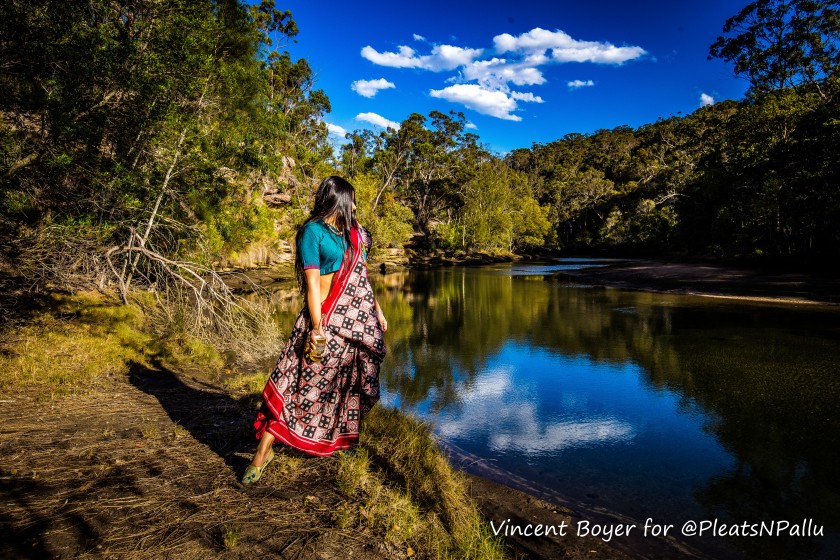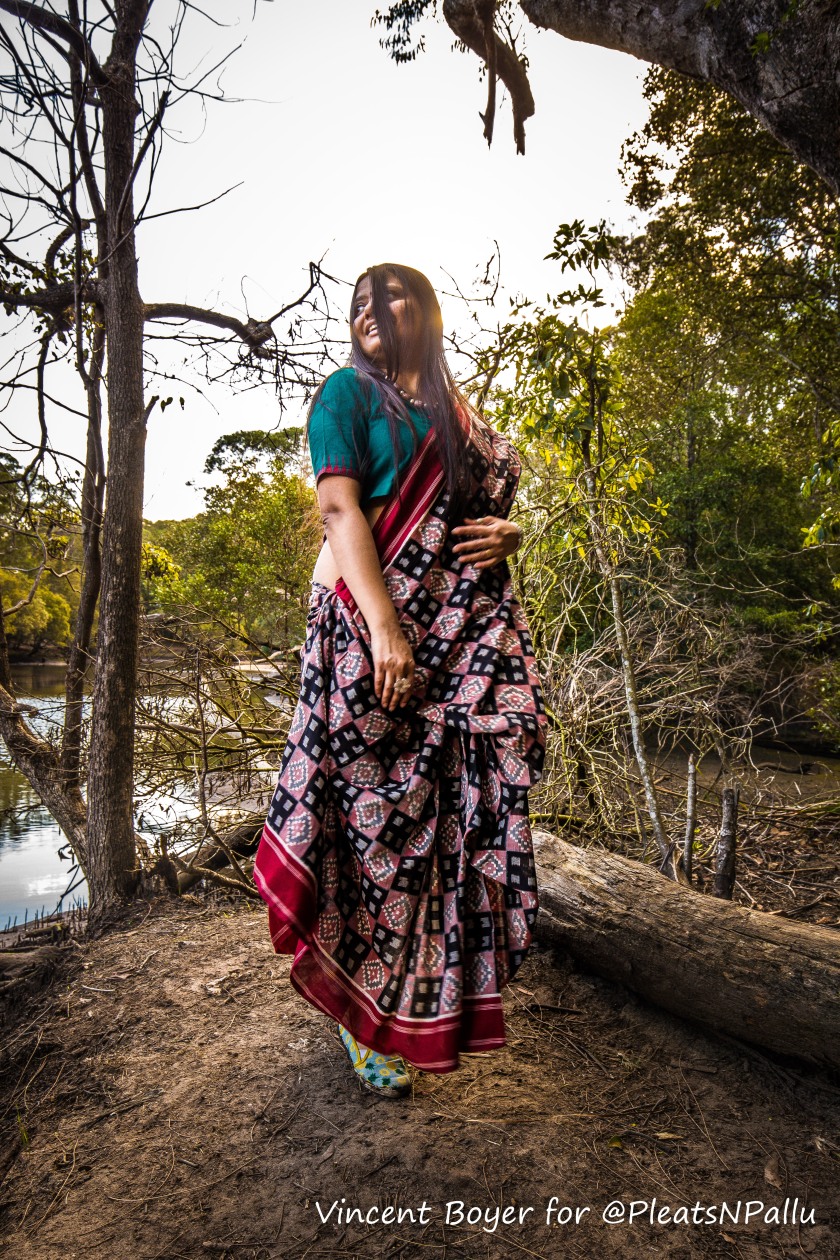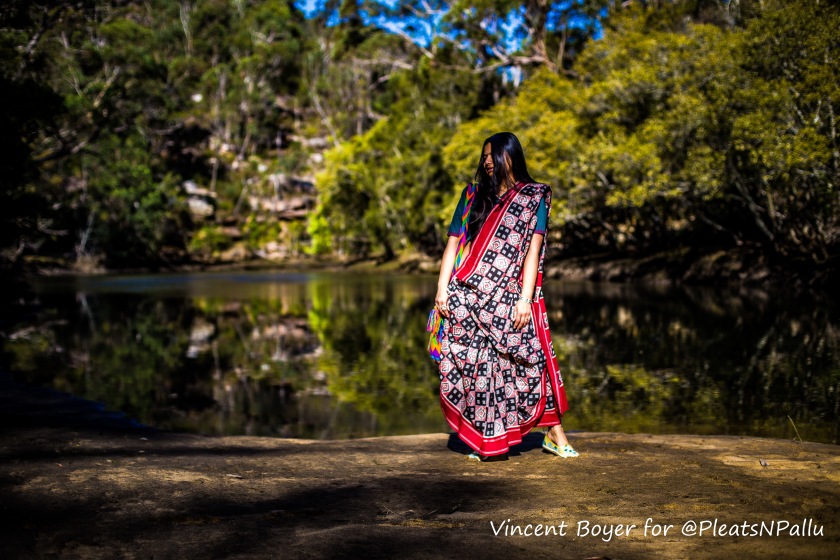I have always been enamoured by the almost dizzying symmetry and angular precision of ikat textiles from the Andhra Pradesh/Telangana region….
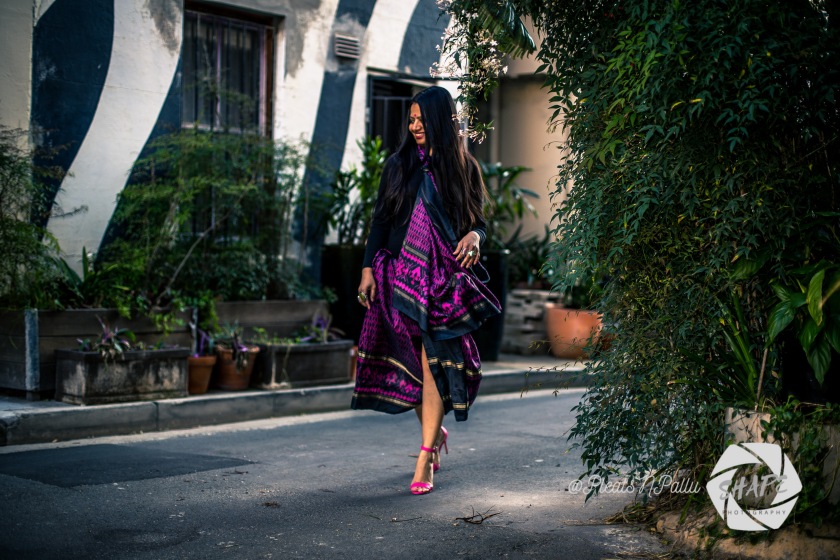
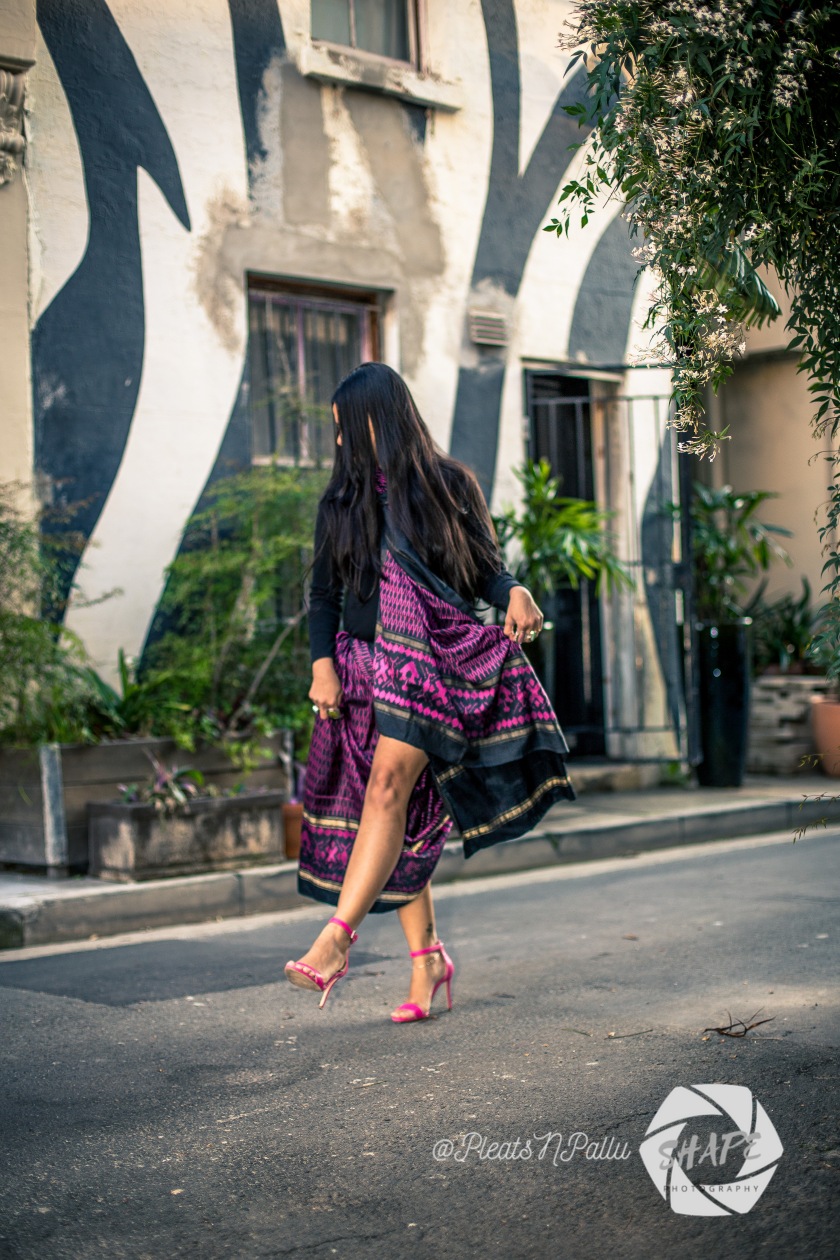
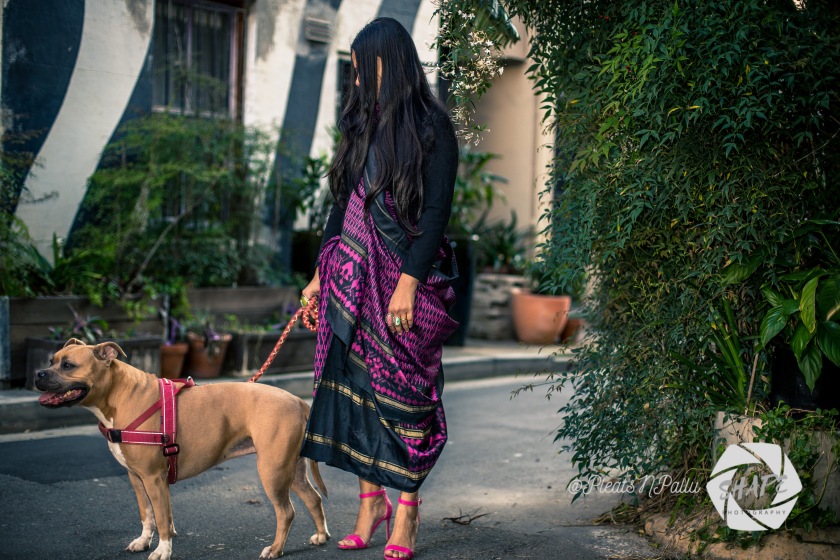
Photos: Vincent Boyer (Say hi on instagram @vincetravelbook)
In these photos I am wearing a vintage Pochampally silk saree that is a preloved treasure over a merino wool base layer for a relaxed afternoon brunch and playtime with the puppy face.
The Andhra style of yarn resist-dyed woven fabric, i.e. ikat, is known locally in Telugu as ‘paagadu bandhu’, ‘chitki’, ‘buddabhashi’ and more colloquially as Pochampally.
I am just going to refer to the region as Andhra in this post, I think this two-state demarcation is going to take me ages to get used to. In modern day India, this region is the largest exporter of ikat textiles, which really surprised me because I always assumed that the state of Odisha had bigger production and export.
The dominant motifs in indigenous Andhra ikat textiles include simple as well as intricate geometric designs, multicolored patterns, wedge-like patterns and stripes. There isn’t much in terms of documented history to ascertain the exact time or origin of the ikat technique in the region but it is widely accepted that the craft isn’t an ancient practice in the area.
The oldest centre for ikat textiles in the region is believed to be Chirala which used to produce the famous double ikat ‘telia rumal’ (oily handkerchief) or ‘chowkas’ (diamond within a square) measuring between 55 to 75 cms. The most common motifs in telia rumals include a geometric representation of mathikai (a local fruit), and mallipu (jasmine).
Traditionally only red, black and white yarn were used to create these fabrics and they were offset by wide single coloured borders. In India, they were more commonly seen on fisher folk and cowherds as loincloths, lungis or turbans. And there are document to prove that in the 1930’s they were exported in large numbers to Burma, the Middle East and East Africa where they were known as Asia Rumals.
Currently, only a few weavers in the Puttapaka village of Nalgonda district create this complicated weave. Apart from the telia rumals all other double ikat produced in the states are heavily influenced by the Patolas from Gujarat.
As per the geographical indication (GI) tag application, Pochampally ikat textiles come from at least 40 villages within a 70 km radius of Hyderabad. This includes Nalgonda, parts of Warangal, including Pochampally, Koyalagudam, Puttapakka, Elanki and Chautupal. From my research into the Geographical Indication Journal archives, telia rumals are covered under the GI tag bestowed upon Pochampally.
And as per the journal the three basic forms of Pochampally ikat are;
i. Single ikat, where either warp or weft threads are tied and dyed prior to weaving.
ii. Combined ikat, where wrap and weft ikat may co-exist in different parts of a fabric occasionally overlapping.
iii. Double ikat, which is by far the most complex form. Here both warp and weftthreads are tied and dyed with such precision, that when woven threads form both axis, mesh exactly at certain points to form a complete motif or pattern.
As per documents from the Intellectual Property India archives from 2017, currently there are about 100 master weavers who are ultimate authority in crafting these textiles. These artisans have complete knowledge in all aspects relating to the process of making Pochampally ikat, including the critical art of design visualisation, tying and dyeing of yarn till they represent the original draft, loading the looms and finally weaving the fabric to get the desired array of motifs with diffused edges.
For another post featuring a double ikat on cotton from this region please click here for previous posts featuring ikats from Odisha click here, here, here and here.
Random Trivia: It is common to see Pochampally referred to as Bhoodan Pochampally after the Bhoodan (short for Bhoomi daan) Movement. The movement began in 1951 when Vedire Ramachandra Reddy became the first wealthy landowner to voluntarily donate 100 acres of land to Vinoba Bhave in order to benefit landless labourers.
